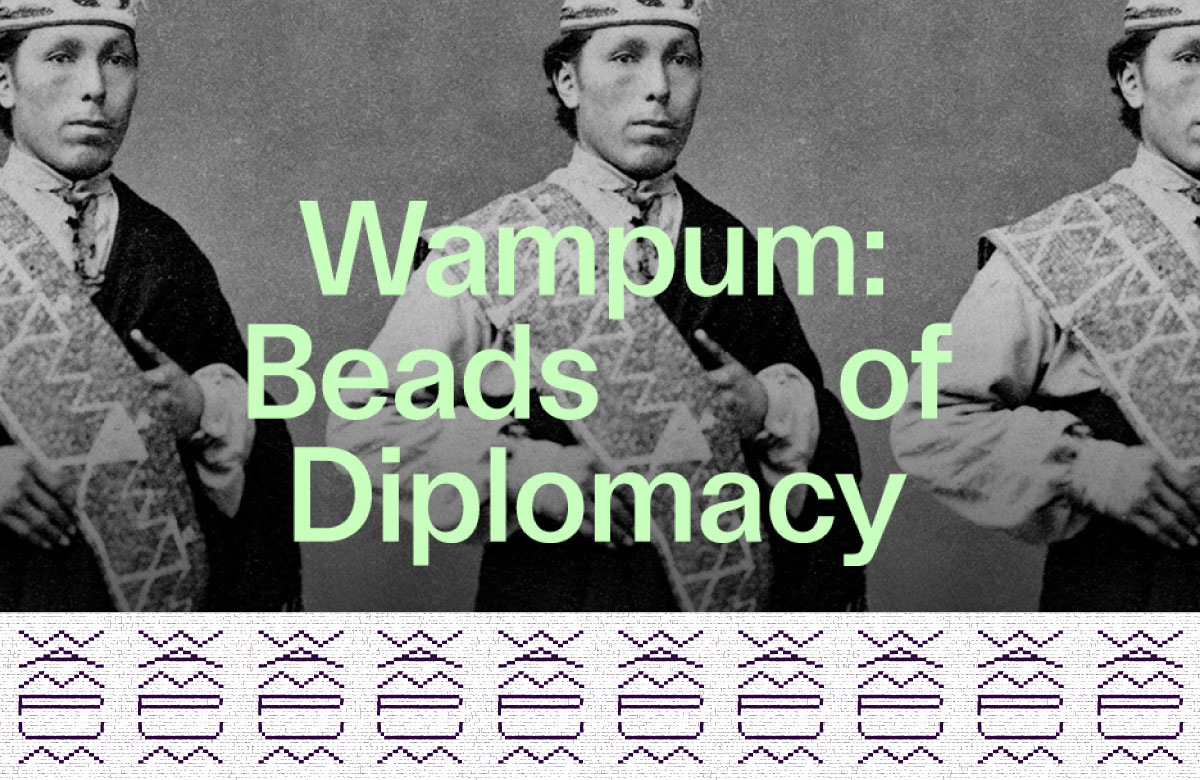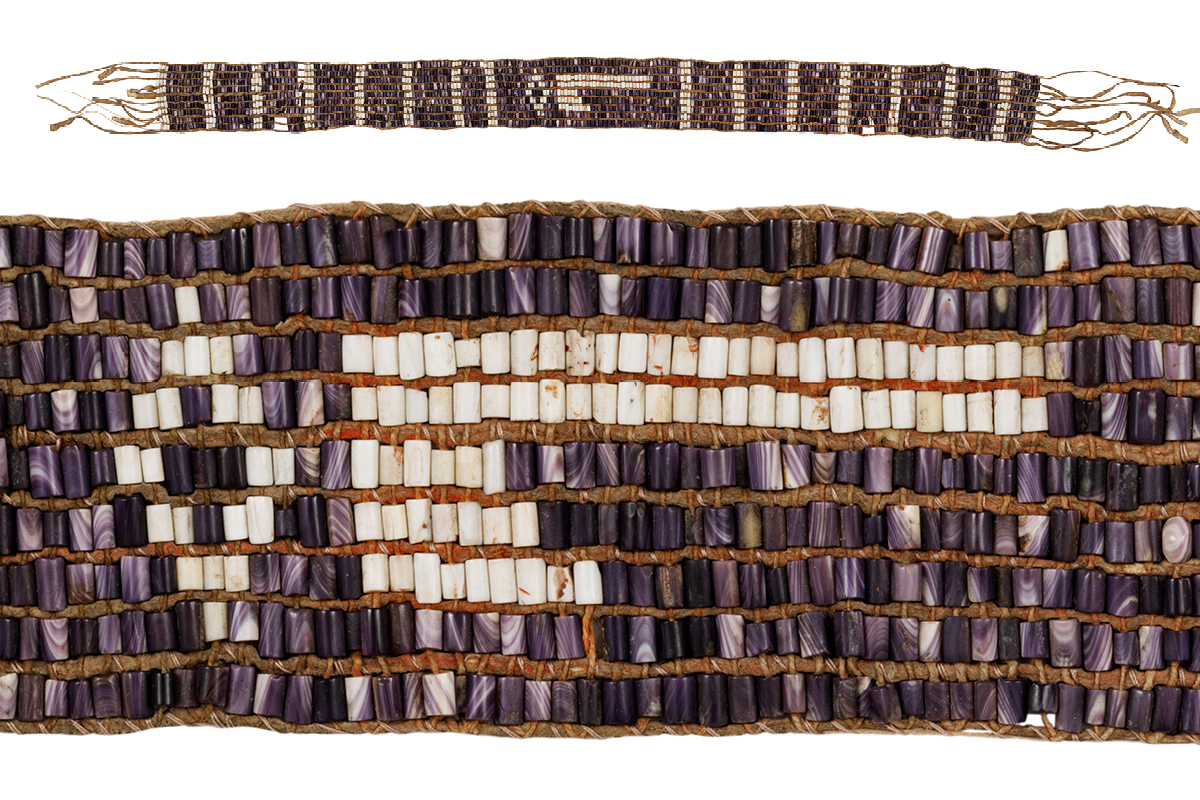
Beaded Threads of Power: Huron Wampum Diplomacy and the Art of Indigenous Statecraft
In the dense forests and along the waterways of the Great Lakes region, where alliances shifted like shadows and the stakes of survival were perpetually high, Indigenous nations forged intricate systems of diplomacy. Among these, the Huron (Wendat) Confederacy stood out for its sophisticated political structures and its mastery of wampum diplomacy – a system of communication, record-keeping, and treaty-making far more profound than its often-misunderstood material form. Wampum, composed of meticulously crafted cylindrical beads from quahog (purple) and whelk (white) shells, was not merely currency; it was the very fabric of statecraft, embodying sacred trust, historical memory, and binding legal agreements. For the Huron, these beaded records were the indelible threads that wove together their complex web of treaties and alliance building, shaping the destiny of a continent.
To understand Huron wampum diplomacy is to delve into a world where spoken words gained permanence through tangible symbols, where oral traditions were reinforced by visual archives, and where the exchange of goods was inseparable from the exchange of solemn promises. The Huron, a confederacy of four or more distinct nations (Attignawantan, Attigneenongnahac, Arendarhonon, and Tahontaenrat) located in what is now southern Ontario, occupied a pivotal position in the vast North American trade networks. Their agricultural prowess, strategic location, and extensive trading relationships with other Indigenous groups and later with European powers, necessitated an exceptionally robust and adaptable diplomatic framework. Wampum was central to this framework, serving as the ultimate arbiter of truth and the enduring testament to agreements made.
The significance of wampum lies in its spiritual and symbolic power. The shells themselves were believed to possess life-giving energy, making the beads inherently sacred. The arduous process of their creation – drilling, shaping, and polishing each bead by hand – imbued them with immense value, signifying the gravity of any message or agreement they conveyed. Purple beads, rarer and more difficult to produce, often represented serious matters, war, or significant authority, while white beads symbolized peace, purity, and clarity. When woven into belts or strung into collars, these colors and patterns formed a complex semiotic system, a visual language understood across diverse Indigenous cultures.
In Huron diplomatic councils, the presentation and exchange of wampum belts were highly ritualized events. A chief or orator would hold a belt, often draped over his arm, as he spoke, "speaking with the belt" to lend authority and truth to his words. Each point of negotiation, each promise, each declaration of peace or war, would be punctuated by the presentation of a specific belt. These belts served multiple functions: as credentials for emissaries, as invitations to councils, as condolence gifts to "wipe away tears" and restore balance after a death, and most importantly, as the physical embodiment of treaties and alliances.
Consider the intricate protocols involved. When an embassy arrived from another nation, wampum belts would be exchanged as a formal greeting, signifying mutual respect and opening the path for dialogue. During negotiations, the speaker would lay down a belt to emphasize a particular point, each pattern representing a specific clause or understanding. For instance, a path depicted by a line of white beads against a purple background might symbolize a clear and open trade route, while two figures holding hands might represent an alliance of friendship and mutual support. The audience, often trained from childhood to "read" these belts, would scrutinize the patterns and listen intently to the orator’s explanation, storing the information in their collective memory. The belts were not mere mnemonic devices; they were living documents, constantly referenced and reinterpreted through generations of oral tradition.

The Huron’s extensive alliances were heavily reliant on wampum diplomacy. Their relationship with the French, beginning with Samuel de Champlain in the early 17th century, is a prime example. The French, eager to secure furs and military allies against the powerful Haudenosaunee (Iroquois) Confederacy, quickly learned the indispensable role of wampum in Indigenous diplomacy. Champlain himself, and later French governors, participated in wampum exchanges, presenting belts to Huron leaders and receiving them in return. These exchanges cemented the vital economic and military alliance that defined much of early colonial North American history.
One significant aspect of these alliances was the concept of the "chain" or "path." While the "Covenant Chain" is often associated with the Haudenosaunee and the British, the Huron also employed similar metaphors in their wampum diplomacy, speaking of "brightening the chain" of friendship or "clearing the path" between nations. These expressions were not abstract; they were physically represented in the wampum belts, signifying ongoing commitment, mutual aid, and the expectation of periodic renewal. A broken chain in a wampum belt would signify a severed alliance, a declaration of hostilities, or a profound grievance.
The Huron Confederacy, at its peak, was a formidable power, able to mobilize thousands of warriors and control vast trade networks. This influence was sustained not just by military might but by a sophisticated diplomatic apparatus built on the foundation of wampum. Through wampum, they negotiated complex agreements with nations far and wide, from the Odawa to the Petun, and later with the Nipissing and Algonquin. These agreements covered issues ranging from shared hunting territories and fishing rights to military cooperation and reciprocal trade. Each treaty, each understanding, was woven into the collective memory and physical form of wampum belts, which were carefully preserved and brought out for renewal councils.
However, the Huron’s diplomatic prowess could not entirely shield them from the cataclysmic forces unleashed by European contact. The arrival of new diseases, devastating epidemics, and the intensification of the Beaver Wars with the Haudenosaunee, fueled by European demand for furs, ultimately led to the dispersal of the Huron Confederacy in the mid-17th century. Yet, even amidst this profound upheaval, the principles of wampum diplomacy endured. Displaced Huron communities carried their wampum belts with them, using them to seek new alliances, recount their history, and assert their identity in new territories. The belts became powerful symbols of continuity and resilience, testaments to their past glory and their enduring nationhood.
The legacy of Huron wampum diplomacy extends far beyond the 17th century. While many historic belts were lost, destroyed, or taken to museums, their spiritual and political significance remains undiminished. Indigenous nations today are actively engaged in repatriating wampum belts, recognizing them not as mere artifacts but as living documents of their sovereignty, history, and treaty rights. These beaded records serve as powerful reminders of the complex and highly organized societies that existed in North America long before European colonization, societies capable of profound statecraft, elaborate legal systems, and sophisticated international relations.
In conclusion, Huron wampum diplomacy represents a pinnacle of Indigenous statecraft, a testament to the Wendat people’s ingenuity, foresight, and deep spiritual connection to their land and their agreements. Far from being simple beads, wampum belts were the very embodiment of treaties, alliances, and historical memory – a sacred archive woven into the fabric of time. They provided a visual and tangible record that buttressed oral traditions, ensuring the permanence and clarity of agreements across generations and diverse cultures. The Huron’s mastery of this diplomatic art not only defined their own political landscape but also profoundly influenced the course of early North American history, demonstrating the enduring power of beaded records to forge and maintain the most critical of human connections: trust, alliance, and peace.



